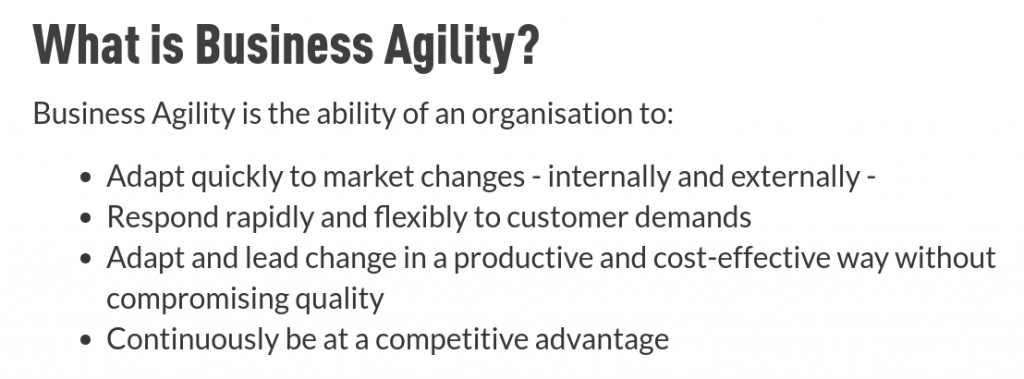When working with organisations and clients, this is my reasoning and a suggested approach
For the sake of brevity, I won’t dive into detail here. Neither am I suggesting this a one-size-fits-all approach; this is a generic approach that should be customised to the client.
- In order for an organisation to compete it needs to establish (or reaffirm) a clear market differentiator that appeals to their customers/clients.
- The market is changing rapidly. There’s plenty of emerging threats and opportunities, some are known, some are unknown(able).
- The organisation needs to identify the cash cow operations & services that need to be maintained and improved; these drive revenue. This creates one side of what’s termed the Ambidextrous Organisation.
- They also need to retire operations & services that no longer drive revenue or are no longer a strategic fit.
- Critically the organisation needs to seek new operations & services for new or existing customers/clients. This creates the other side of the ambidextrous organisation. In reality, only a few ideas are credible to scale to become the new cash cows.
- Points 3, 4 & 5 should establish a continuous balanced flow of initiatives. This enables the organisation to continuously sense & respond to ensure ongoing market fitness. This creates a Lean Enterprise
- Especially for Point 5, since there’s a huge amount of uncertainty, the ways of working, organisational structure, success criteria and leadership style is different from what’s needed for Point 3.
- To seek new viable operations and services, the organisation needs to be especially outcome driven, with flexible ways of working, an experimental approach supported by leaders, close co-discovery with stakeholders, close collaboration with customers/clients, where potentially many strategies and solutions are vetted.
- This ability for the organisation to sense and respond is in keeping with The Agile Business Consortium’s definition of Business Agility.

Where to start
To develop and carryout changes of such significance and depth requires the direct involvement of the leadership team. The following slides provides a high-level view of what such an engagement is likely to cover.
Further Reading
- The Ambidextrous Organization by Charles A. O’Reilly III and Michael L. Tushman
- Lean PMO: Managing the Innovation Portfolio by Barry O’Reilly
- The Agile Business Consortium’s definition of Business Agility
Thanks to Luca Minudel for helping me strengthen this article.
